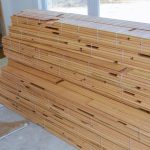A conservatory is an exquisite addition to any home. It provides an extra space where you can relax, entertain, or simply enjoy the natural beauty of your garden. However, the UK weather can often make your conservatory less comfortable than you would want. It can become too hot in the summer and too cold in the winter. Insulation is the best solution to balance the temperature of your conservatory year-round. Insulation helps reduce the heat loss in winter and prevents overheating in summer. In this article, we explore the most effective ways to insulate your conservatory to maximize its use all year round.
Selecting the right type of Glass for your Conservatory
One of the most critical elements of a conservatory is the glass used in its construction. The type of glass you select for your windows and roof can significantly influence the heat maintenance of your conservatory.
En parallèle : How can you introduce biophilic design elements into a UK home office?
Double glazed windows are an excellent choice for conservatories. They consist of two layers of glass with an insulating gap in between. This gap creates a barrier that reduces the transmission of heat, thus keeping your conservatory warm in the winter and cool in the summer.
Premium quality glass types such as low emissivity (Low-E) glass are also highly efficient at insulating conservatories. Low-E glass has a thin metallic coating that reflects heat back into the room, reducing heat loss.
A voir aussi : Rare antique clocks: a guide to exquisite collectibles
Insulating the Conservatory Roof
The roof of your conservatory plays a pivotal role in its insulation. Most of the heat in a conservatory is lost through the roof, and therefore it requires special attention while insulating.
The best way to insulate your conservatory roof is by using insulated roof panels. These panels consist of a sandwich of two layers of rigid material enclosing a layer of insulating material, which minimises the amount of heat that escapes through the roof.
Alternatively, you can also insulate your conservatory roof with a secondary layer of insulation on the inside. This is a cost-effective method that involves attaching thermal quilt insulation to the interior of the roof.
Utilising Thermal Blinds and Curtains
Blinds and curtains are not just decorative additions to your conservatory. They also serve as effective insulators.
Thermal blinds are designed with a special reflective backing that helps to keep heat in. They work by reflecting the heat back into the room, providing an additional layer of insulation to your windows and roof.
Similarly, thermal curtains are made of a thick material with a thermal lining that helps to prevent heat loss. By simply closing your thermal blinds or curtains, you can add an extra layer of insulation to your conservatory.
Installing Heating Systems
Although insulation plays a significant role in maintaining a comfortable temperature in your conservatory, installing a heating system can further enhance this comfort.
Underfloor heating is an excellent option for conservatories. It efficiently distributes heat across the room, creating a cosy and warm space in winter.
Alternatively, you can consider installing a radiator or a portable heater in your conservatory. However, these should be used as secondary sources of heating, supporting the insulation and the underfloor heating system.
Incorporating an Energy Efficient Design
The design of your conservatory can also greatly affect its energy efficiency and heat retention ability.
For instance, south-facing conservatories receive more sunlight and therefore can be warmer. In contrast, north-facing conservatories might need more insulation and heating as they receive less sunlight.
Moreover, incorporating features such as a dwarf wall can help improve the insulation of your conservatory. A dwarf wall is a short wall that serves as the base for the conservatory. It helps to insulate the conservatory and provides a solid foundation that improves energy efficiency.
In conclusion, there are several ways to insulate your conservatory for all-year use. By applying these methods, you can make your conservatory a comfortable and energy-efficient space that can be enjoyed throughout the year. So, take the time to research and find the best insulation solution for your conservatory, and enjoy the benefits of a cosy and warm space in winter and a cool and comfortable room in summer.
Applying Solar Control Film
Solar control film is another effective method to insulate your conservatory and achieve optimal temperature all year round. This film, applied to the interior of your conservatory glass, helps to regulate the heat that is transmitted through your conservatory.
While allowing natural light to enter, the solar control film reflects away a large portion of the sun’s heat, keeping your conservatory cool in summer. During the winter, the film helps to trap the heat inside the conservatory, reducing heat loss.
Moreover, solar control film also protects your conservatory furniture and carpets from fading due to exposure to sunlight. It is a cost-effective solution that not only improves thermal efficiency but also extends the lifespan of your conservatory interiors.
Choosing Insulated Doors
Your conservatory doors are another aspect to consider when aiming to insulate your conservatory effectively. Heat loss can occur through doors, and choosing insulated doors will help limit this.
Insulated doors are typically constructed with a core of insulating material sandwiched between two layers of solid material. This design helps to prevent heat from escaping through the door.
In addition, weatherstripping around the doors can also stop drafts and further improve the insulation. Weatherstripping is a simple and inexpensive method that involves applying a sealing strip around the door frame to block out cold air.
Conclusion
Insulating your conservatory is crucial for maintaining a comfortable living space all year round. With the correct insulation, you can reduce heat loss in the winter and prevent overheating in the summer, leading to lower energy bills.
From choosing double glazed windows and applying solar control film, to installing underfloor heating and selecting insulated doors, there are numerous ways to enhance the energy efficiency of your conservatory.
Remember, the design of your conservatory, including the direction it faces and features such as a dwarf wall, will also affect its thermal efficiency.
By taking the time to properly insulate your conservatory, you can create a cosy and comfortable space to enjoy throughout the year, while also improving the energy efficiency of your home.
Insulating your conservatory might require an initial investment, but the long-term savings on your energy bills and the added comfort it delivers make it a worthwhile endeavour. Turn your conservatory into a year-round haven with the right insulation.











